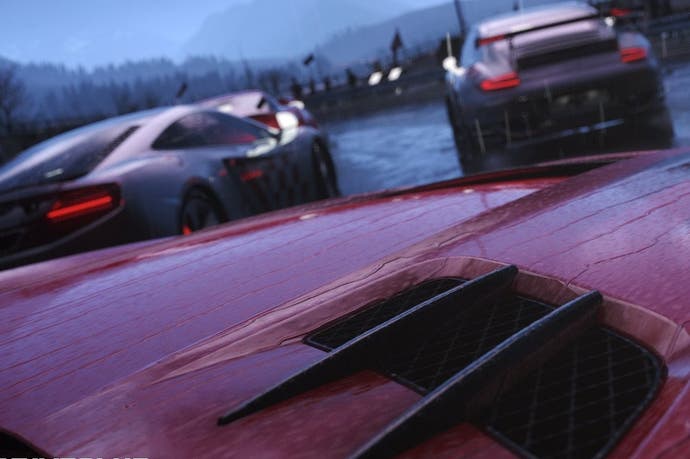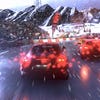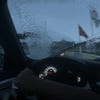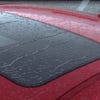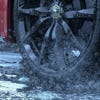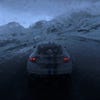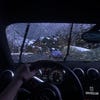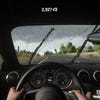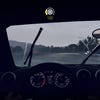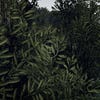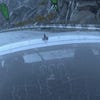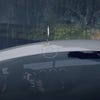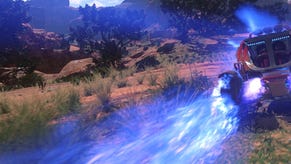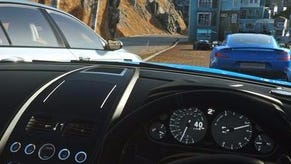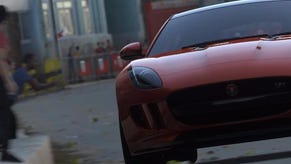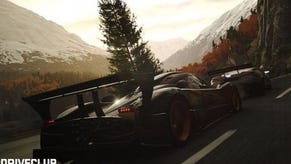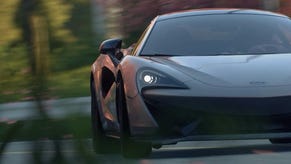DriveClub revisited: is dynamic weather a game-changer?
Digital Foundry re-assesses Evolution's PS4 debut in the wake of this week's spectacular upgrade.
Even before launch, DriveClub was a divisive title, provoking a range of different opinions, but its fortunes weren't helped by the total collapse of the online component, souring what was - in our view, at least - an otherwise great arcade-style racing game. However, in the wake of the disaster, Evolution has been working hard to put things right. As things stand right now, the connectivity problems are resolved, plenty of new features are added to the mix, and the first pieces of DLC have been handed out for free. In terms of new features, photo mode arrived a few weeks back, but the real star of the show is the game's brand new dynamic weather system.
It's a supremely impressive enhancement to an already beautiful title. At launch, DriveClub possessed an impressive dynamic time of day and volumetric cloud system, allowing for some stunning visuals. DriveClub features an extremely robust lighting system with realistic global illumination and a focus on physically based illumination of materials. With the addition of rain and snow conditions, we now see the full benefits of this approach: the effects are dramatic and impressive with an attention to detail that exceeds expectations. Could this be the most realistic portrayal of rain and snow in a racing game, or indeed any game, to date? On reflection, we'd say yes.
The new weather options are available straight away after installing the 1.4GB patch. As with cloud cover and time of day, weather effects are fully customisable in certain modes, allowing the user to toggle between dry racing alongside light and heavy precipitation conditions. On top of that is a dynamic option that is perhaps the most interesting of the bunch, allowing the game to transition realistically between bright sunny days and dark stormy nights. The effects are created from a variety of different elements, each worthy of focus in their own right:
Water droplets: Unlike many games, DriveClub uses individual droplet particles to represent the rain. Each particle is impacted by the game's motion blur system, giving the impression of long, vertical streaks while driving. Evolution didn't simply draw a bunch of thin transparent lines and use them to create rain. Rather, the developer relies on the game's ultra-detailed rendering systems to handle this effect properly and correctly with unprecedented levels of interaction between cars, environments and effects. It's even crazier in the snow where blizzard-like conditions occur with so many particles on screen that it can become difficult to drive, with Norway at night proving truly frightening. More impressively, these particles are properly lit by the player car's headlamps, looking incredible in motion - with the only real drawback coming from the lack of illumination from other cars. Drawing and lighting the additional particles to make that happen would no doubt prove too costly and it's not really missed anyway, but it's worth pointing out bearing in mind the extreme attention to detail seen elsewhere.
Wet road surfaces: This is very important when simulating weather conditions and DriveClub produces very detailed results. The road surface now features variable puddles and reflections, depending on the conditions. Reflections are screen-space, which looks great during gameplay, but can introduce some limitations in photo mode, as only objects visible within the scene are reflected. This approach does allow reflections to properly reflect light and shadow present in the main scene, however, giving them a very dynamic appearance. As for the puddles themselves, we noted a variation in size based on the amount of rain, though the amount by which they change is minor when sitting still. However, while driving around the course, using the randomised weather patterns, we definitely noted the road become increasingly reflective as the rain became heavier.
Wetness properties of other surfaces: Other elements within the game world show wetness as well. Leaves, barriers, dirt, and stone all realistically receive adjustments to their appearance to simulate the accumulation of moisture. As the game uses a physically-based rendering pipeline, this no doubt makes this process much easier to deal with. The developer is likely able to adjust both the reflectivity and gloss values independently in real-time, and the material in question should react realistically. Foliage will appear different than plastic barriers, for instance, even if the values are identical.
Dynamic water droplets: Then there is the simulation of water droplets on the cars themselves. The technique used here gives the impression of three dimensional water droplets that produce streaks, reacting to velocity and direction. Sitting at the starting line as the rain picks up, you see droplets streaming down the windscreen and across the paint in a realistic manner but when you hit the accelerator, these droplets then streak in the proper direction. It's the same deal with the wiper blades, which push water around realistically while the resulting water continues to react to external forces. The blades even leave proper streaks behind that distort your view somewhat - a frustrating, but realistic, fact of life when driving in extreme weather conditions. The game's virtual camera also receives droplets that are deliberately out of focus, giving them a very realistic appearance. Some might not like the fact that external views are obscured by water droplets too, but we think that this is likely an issue of balance, as it means that all players must contend with the weather. It may be deliberately obstructive to gameplay, but it does look amazing.
Thunder and lightning: Rain storms do make an appearance in DriveClub and, thanks to the lighting model, lightning creates appropriately bright flashes that illuminate the entire scene. Fighting through the pitch-black mountain curves of Norway, the blasts of lightning give you a brief look at the entire world around you before being plunged back into darkness. These flashes even reflect properly within the road surface itself.
It's pretty hardcore stuff. Just for kicks, we booted up Forza Horizon 2 to see how it stacks up against DriveClub's new weather conditions. Playground Games' offering included weather right from the start, with some lovely effects work - but the open world gameplay means that the Xbox One title has very different priorities in how it handles its rendering budget, meaning that the overhead isn't there for the extreme precision Evolution chose to embrace instead. For example, DriveClub utilises dynamic globules for its droplets as opposed to the thin, alpha textures in Horizon 2. They do receive light but seemingly only from light posts rather than the cars' headlamps, which reduces the realism of the effect at night.
More dramatically, the appearance of water on the car is simplified and less dynamic, with the utilisation of a nice water shader effect that creates attractive, but relatively static droplets. The beads of water are not impacted by speed or direction and do not streak realistically. The windshield wipers simply eliminate these droplets with each pass before more are formed, but the effect is a simple texture that gives the impression of wiping away the rain. In comparison, it really seems as if water is being pushed around dynamically in DriveClub. It should also be noted that, unlike DriveClub, Horizon 2's wipers appear to function in just two modes; on or off.
Additionally, surface properties don't receive the same attention either with leaves and other objects appearing identical regardless of weather conditions. Reflections are handled differently too - they're not screen-space in Horizon 2 but they show less detail, it seems, and are clipped somewhat near the camera. That said, at least in photo mode reflections of trees can appear in the shot even when the trees themselves aren't present in the specific angle. Lastly, Horizon 2 lacks the dynamic volumetric cloud system of DriveClub and its time of day transitions (particularly its shadows) aren't handled as smoothly. That's not to knock the game, of course, as Horizon 2 is still an absolutely beautiful racer with excellent image quality and a wide open approach to gameplay not found in the PS4 title, but it's an interesting juxtaposition of developer priorities.
We should also mention the game's recently introduced photo mode. Unlike many other PS4 games with this functionality, DriveClub supports improved anti-aliasing and additional camera effects when taking a shot. Essentially, after lining up the shot, the game begins to process the image, adding these additional effects on top. You can fully adjust the shutter speed, aperture, focal distance, and bokeh shape while enabling extra filters and borders to enhance the shot. The tools are functional and produce nice results but we're disappointed that the camera is limited to the area surrounding the car, after the Gamescom preview video showed a trailer in which the camera could fly up into the clouds.
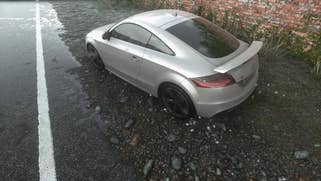

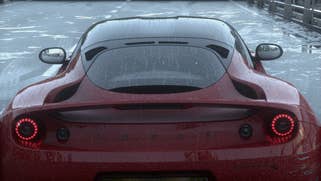
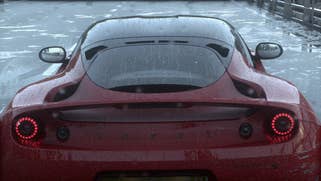


After being able to essentially walk around the entire track in titles like Project Gotham Racing 4, it's disappointing that so few modern games haven't provided similar functions. We've heard rumblings of improved in-game anti-aliasing for a while now as well but based on comparison shots we've generated compared to the launch version, it's difficult to conclude if there has really been any improvement. What's important to note is that DriveClub's AA is at its best in motion - stopping your car actually accentuates the game's aliasing issues.
DriveClub revisited: the Digital Foundry verdict
It's hard not to rave about what we're seeing here with this latest patch. We love looking closely at game visuals and picking apart the fine detail, and it's rare to come across something so startlingly impressive - but here it is. The weather effects in DriveClub are, without a doubt, some of the most realistic we've seen in any game to date. Combining these effects with the already excellent lighting model and realistic materials elevates Evolution's racer to the top of the pack from a visual perspective and in combination with the other features added to the game, it definitely deserves another look.
In a declining genre where open world sandbox gameplay comes as standard with virtually every racing title, it actually feels rather refreshing to return to a classic track-based game like DriveClub. We had a soft spot for the Evolution racer since our pre-launch testing (before things went horribly wrong) and this stunning dynamic weather patch in combination with the other new features adds a new sheen of polish and a definite wow factor. Opinion is divided of course, but in our view, there's a great game in here with some of the finest visuals you'll see in a racing title.
